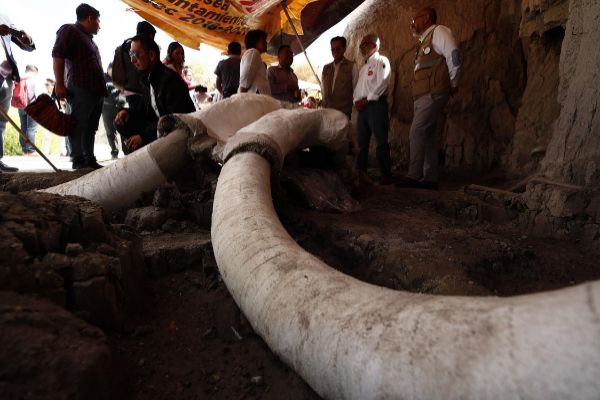- He is 40,000 years old. They find a mysterious Pleistocene giant wolf head in Siberia
- Anthrax: The 'zombie' bacteria that attacks Siberia
Two graves made by humans, with numerous remains of mammoths, have been excavated in Mexico, in what archaeologists present as traps used by the first settlers in the region.
According to the INAH (National Institute of Anthropology and History) of Mexico, it is an unprecedented context of hunting and cutting of mammoths that was built where Tultepec (State of Mexico) is located approximately 15,000 years ago. These are two graves with walls of almost 90 degrees, 1.70 meters deep and 25 meters in diameter.
Distributed in the pits below 3.50 meters, more than 800 bones corresponding to at least 14 mammoths have been recovered. The remains of eight come from the first two excavation units located in the southwest corner of the land; the vestiges of six others were rescued north of it, in the third excavation unit.
In addition, three nearby sites have been referred to with mammoth remains, so it would be a "line of traps", a strategy that would allow hunters to reduce the margin of error in capturing the specimen.
Escape from a volcano
In that sense, the prehistoric traps of Tultepec, were excavated in the clay of the bottom of Lake Xaltocan, approximately 15,000 years ago, when their levels dropped and left large plains exposed. This worldwide phenomenon coincided with a local one: the great eruption of Popocatépetl 14,700 years ago, which motivated a great mobilization of animals and humans towards the north of the Basin of Mexico, where the fall of volcanic ash was lower.
The deposition of fine layers of ash, between and above several of the recovered mammoth bones, as well as the presence of bentonite (lacustrine bed clay) on others, allows this context to be tentatively dated and to speculate its continuous use throughout 500 years However, the record of more remains above the graves, is evidence that once the lake level was recovered and the graves filled with the decomposition of tules, reeds and other aquatic vegetation, this area continued to be a 'mammoth cemetery '.
According to the criteria of The Trust Project
Know more- Science and Health
- science
Food Lab-grown meat already has real texture
Environmentally-friendly resignations, disagreements and accusations in the scientific committee that studies the Mar Menor
Google Technology achieves quantum supremacy with an impossible task to solve for today's computers

